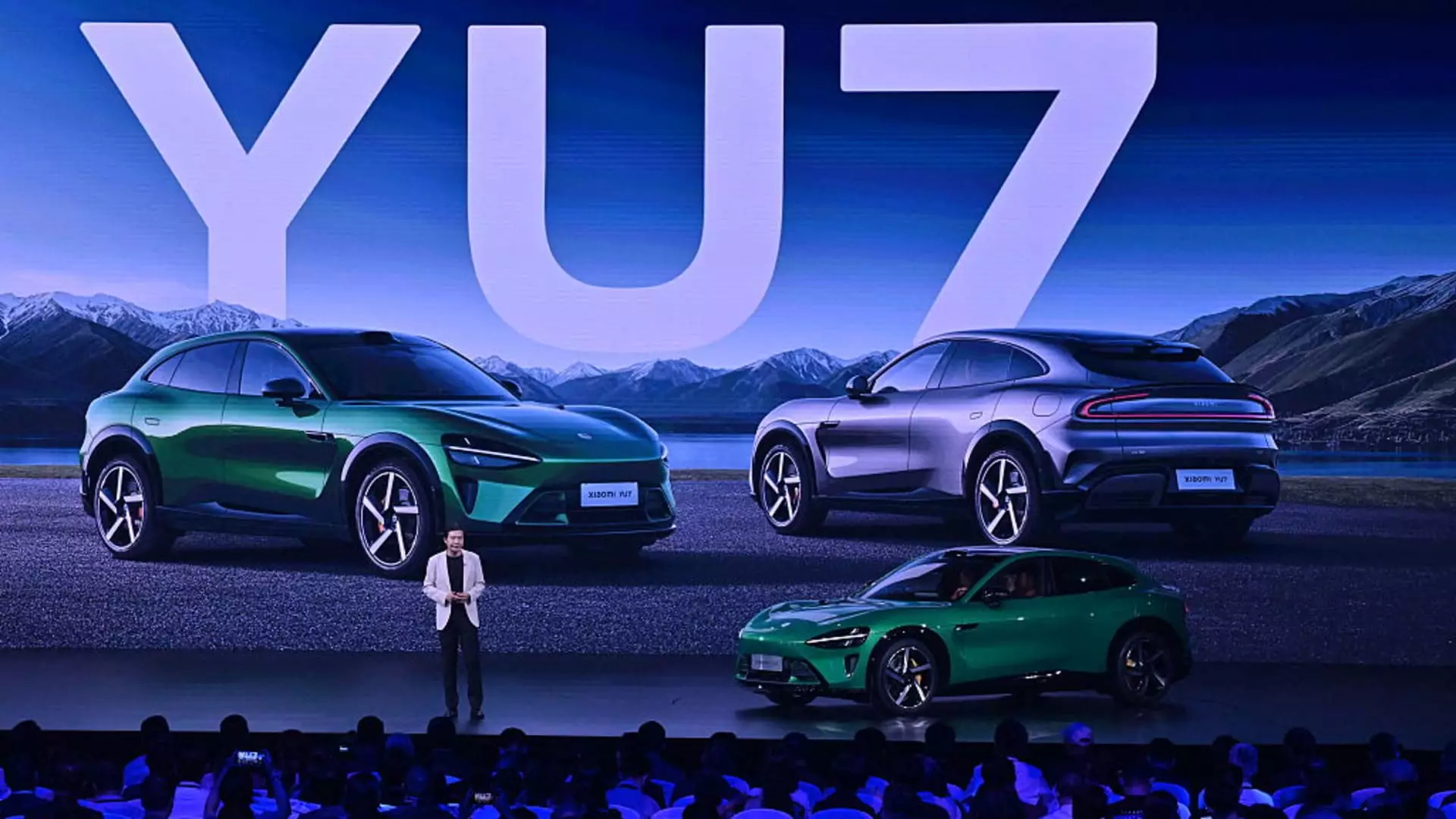In a world hurtling towards sustainable energy solutions, the electric vehicle (EV) market has become the new battleground for technological dominance. As more companies join the fray, a significant player is making strides that could disrupt the entire landscape—Xiaomi. This Chinese tech behemoth, best known for its smartphones, is a newcomer to the EV arena and is already setting its sights on market leader Tesla. With the unveiling of its YU7 SUV, Xiaomi aims to redefine consumer expectations and challenge Tesla’s foothold in China.
Xiaomi’s recent introduction of the YU7 is not just a strategic move; it’s an audacious declaration of intent. With a promised driving range exceeding 760 kilometers (472 miles) on a single charge, Xiaomi has positioned itself to outpace Tesla’s Model Y, which boasts a slightly lesser range. This crucial factor hits at the heart of consumer concerns regarding EVs—range anxiety. By addressing this issue head-on, Xiaomi is not merely entering the market; it’s aiming to disrupt it fundamentally.
A Price Point That Complicates Tesla’s Strategy
Pricing for the YU7, set between 250,000 yuan to 320,000 yuan (approximately $34,700 to $44,420), cleverly intersects with Tesla’s offerings. Currently, Tesla’s Model Y starts at 263,500 yuan. This strategic pricing could erode Tesla’s customer base, as potential buyers weigh the benefits of a longer range and lower price. Citi analyst Jeff Chung predicts that the YU7 could command a substantial share of the market once its sales gains traction, projecting monthly sales of around 30,000 units, which translates to an estimated 300,000 to 360,000 annual sales.
Xiaomi is tapping deeply into a critical consumer sentiment—cost-efficiency combined with high performance. Unlike previous entrants who attempted underwhelming price cuts without significantly improving the product, Xiaomi seems equipped to offer an attractive alternative, threading the needle of quality and affordability.
Adverse Shadows from the Past
However, there are undercurrents that complicate Xiaomi’s bold ascent. The launch event also comes after a tragic incident involving the SU7 vehicle, which resulted in three casualties. Such occurrences cast a pall over even the most innovative products and raise questions about safety and consumer trust. In response, regulatory bodies in China have mandated stricter advertising guidelines— a necessary move to protect consumers but one that could stymie sales momentum for companies eager to build hype around their advanced driver-assist technologies.
As fears linger about the safety of autonomous and semi-autonomous driving systems, Xiaomi would be wise to tread cautiously while competing on the cutting-edge technological front. While the lure of flashy features and impressive statistics can fuel initial interest, they cannot make up for a flawed safety record. Consumers need reassurances that their vehicles won’t just be tech-savvy, but also safe.
Branding and Market Perception
Xiaomi’s SUV aims to resonate with a younger, tech-savvy demographic who are not merely looking for utility but a statement. The branding strategy positions the YU7 as a “luxury SUV,” suggesting that Xiaomi seeks to elevate its image beyond just a tech company to a premium vehicle manufacturer. This shift is both exciting and perilous. While premium branding can attract higher revenue streams, it also subjects the company to intense scrutiny. This dual identity creates a heightened pressure to not only meet consumer expectations but to exceed them consistently.
As the bicycle of innovation spins in a fast-paced culture where only the fittest survive, Xiaomi must continually innovate to sustain its competitive advantage. With the EV landscape growing ever more populated, an early lead does not guarantee long-term success. The coming months will be a true test of Xiaomi’s resolve, its ability to handle unforeseen challenges, and the resilience of the brand it is striving to build.
In this race against established titans like Tesla, Xiaomi’s footsteps matter profoundly. Whether it can blend technological prowess, competitive pricing, and consumer safety will determine if it can indeed topple a giant, or merely become another chapter in the annals of corporate ambition.

